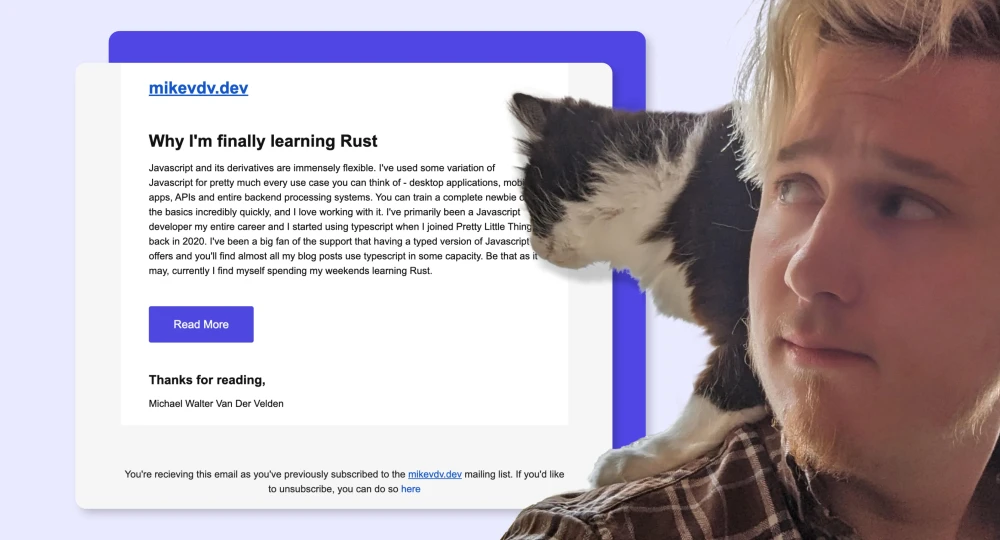Create shipping emails your customers will love
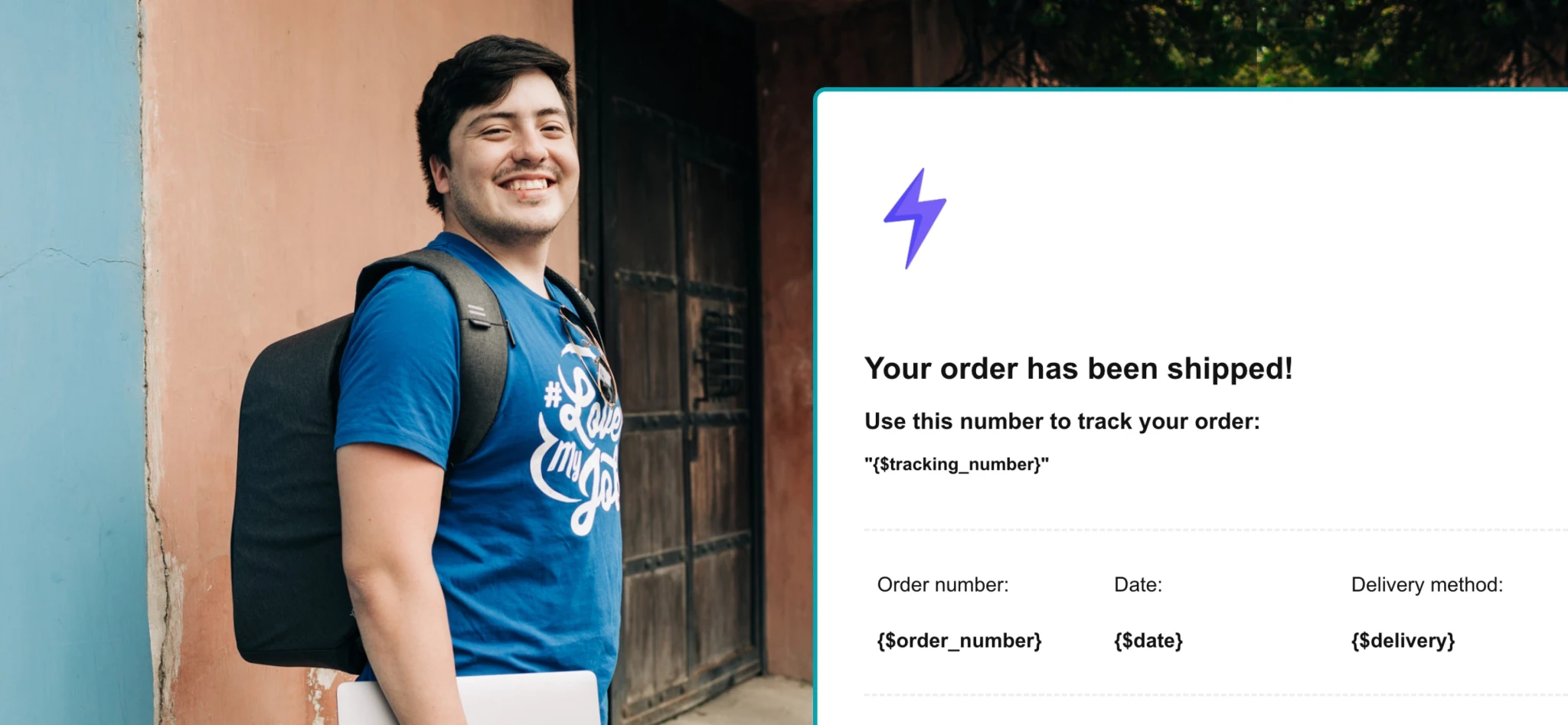
- Essential elements of shipping confirmation emails
- 1. The subject line
- 2. The opening
- 3. The shipping information
- 4. The closing
- How to create spectacular shipping emails
- 1. Keep it to the point
- 2. Use clear, simple language
- 3. Be consistent with branding
- 4. Use personalization
- 5. Add value
- 6. Make your emails responsive
- Start with the email building blocks
I don’t know about everyone else, but when I make an online purchase, I beeline it straight to my inbox and patiently wait until I receive my shipping confirmation order.
Well, maybe I don’t wait there, just obsessively check until it finally arrives. 😅 And that’s because:
1) It eases my anxious mind by reassuring me that my order has been successfully received.
2) It grows my trust in the brand—if they’re sending me a timely shipping email then they surely aren’t trying to scam me.
3) It helps me to understand when my order should be arriving and whether I need to make arrangements for it.
4) It sparks joy! Plain and simple.
In the rare cases when I don’t receive a shipping confirmation email, the customer journey is less pleasant and I question whether to order from the store again. Because aside from easing my anxiety, it also gives the impression of a lack of professionalism any impacts any trust that's been built.
So we know that actually sending a shipping email is the first crucial step. But what can you do to make your shipping confirmation emails stand out and really enhance the customer experience?
Subscribe to download your free content templates
Sign up below and we'll deliver the shipping email content templates to your inbox!
Thank you!
Your templates are on the way!
Getting started: Essential elements of shipping confirmation emails
Include these 4 elements to ensure that your e-commerce shipping notifications fulfill their purpose and provide value to customers.
1. The subject line
Check out these shipping email subject line examples:
Cult Beauty: Your Cult Beauty Order Has Shipped
Abercrombie & Fitch: Your order is on its way!
Revolut: Amy, your Revolut card's in the post! 💌
Etsy: Your Etsy Order dispatched
Yolanda’s Chocolatiers: Order shipped!
Arket: Your order has been shipped
INPRNT: Your order GZ739QBK has shipped!
Waterstones: Your order 21365715 has now been shipped.
Herschel Supply Co.: Your Order Has Been Shipped
Marshall Headphones: Your order is ready to ship!
They are all pretty similar—clear and straight to the point. The most important thing about your shipping confirmation subject line is that it is clear so that the recipient immediately understands what the email is about when they see it in their inbox. It’s easier for them and your open rates will improve!
You can increase the chances of people opening your emails further by adding a personal touch. Revolut does this by including the customer’s name and an emoji in the subject line. Not only does this help to make the email stand out, but it stays true to Revolut’s brand voice and personality.
Revolut: Amy, your Revolut card's in the post! 💌
INPRNT and Waterstones also do the customer a favor by including the order number in the subject line. This is useful if the customer has multiple orders and wants to differentiate them in the inbox or search for specific orders.
INPRNT: Your order GZ739QBK has shipped!
Waterstones: Your order 21365715 has now been shipped.
2. The opening
This one is pretty simple. Shipping emails should start off by reiterating what the subject line has told us: Your order has shipped! Other than that, it’s a good idea to keep the opening of the email short and sweet. You can make it more personal by addressing the customer by name, and including their order number. Here’s an example:
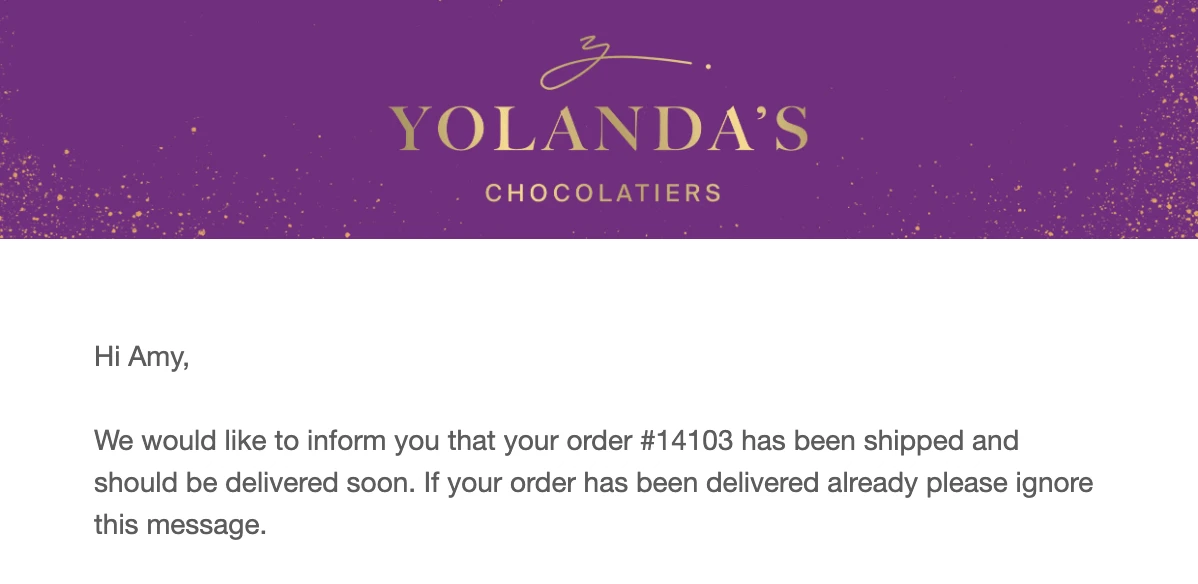
And here’s another shipping email example from Abercrombie & Fitch that keeps the opening simple while sticking to their brand voice and personality. In this email, they have included their email opening in the header.
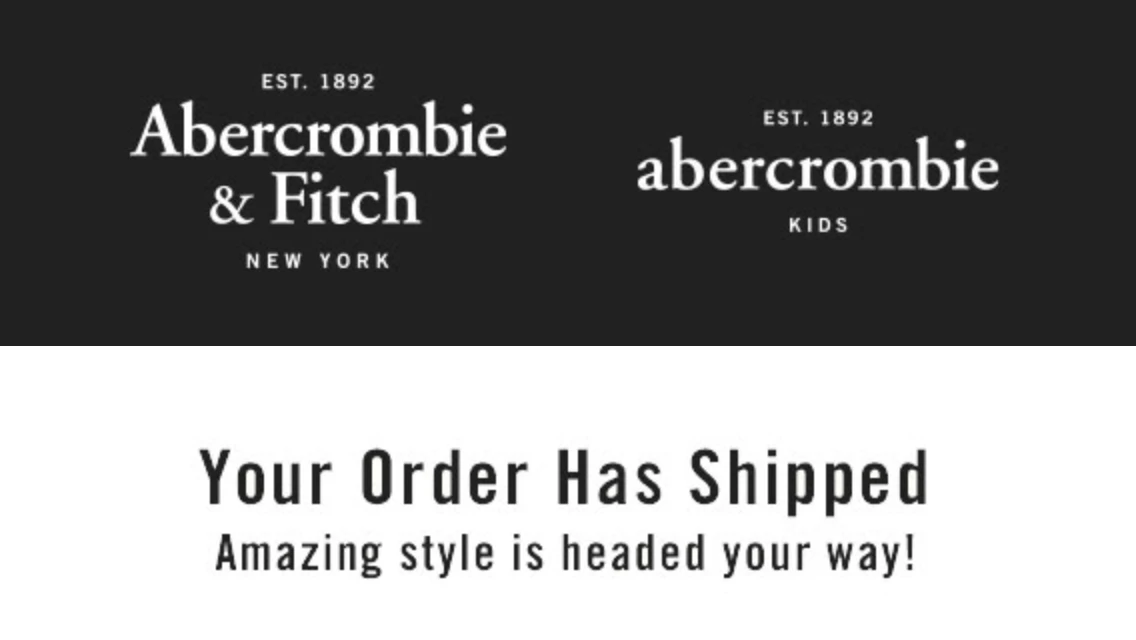
3. The shipping information
This is where the meat of your shipping confirmation email resides—all of the important information about the delivery should go here. When considering what shipping details to include, think of the 4 Ws:
Where is the order? Tracking information: This allows customers to track the shipping of their order in real-time—so it’s super important! Recipients are likely to return to this specific piece of information multiple times, so place order tracking information at the beginning of this section and make it stand out. Include the actual tracking number as well as a button with a tracking link.
What is the order? Order details: It’s a good idea to reference the order that the shipping email is for—the customer may have multiple orders. Include the order number and items in the order including quantity, cost, and total cost.
When is the order arriving? Estimated delivery date: Apart from giving the customer peace of mind and allowing them to track their orders, shipping confirmations improve the experience by keeping recipients in the loop. By providing an estimated delivery date, customers know when to expect the delivery, and can make arrangements for it to be delivered successfully.
Who is delivering and receiving the order? Courier information and recipient details: This one is a 2-parter. It’s a good idea to include the courier information and shipping method so that customers know who to contact if they need to. It also lets them know which company they should expect communication from, which is important, especially with the rise of email and SMS spoofing scams! Confirmation of the recipient’s name, email, phone number and shipping address is essential to confirm that the delivery is headed to the right place.
Check out this nice example from Marshall which includes everything we’ve mentioned, and makes it super easy to track the delivery. They’ve also added in additional information such as the order date, order status and payment method.
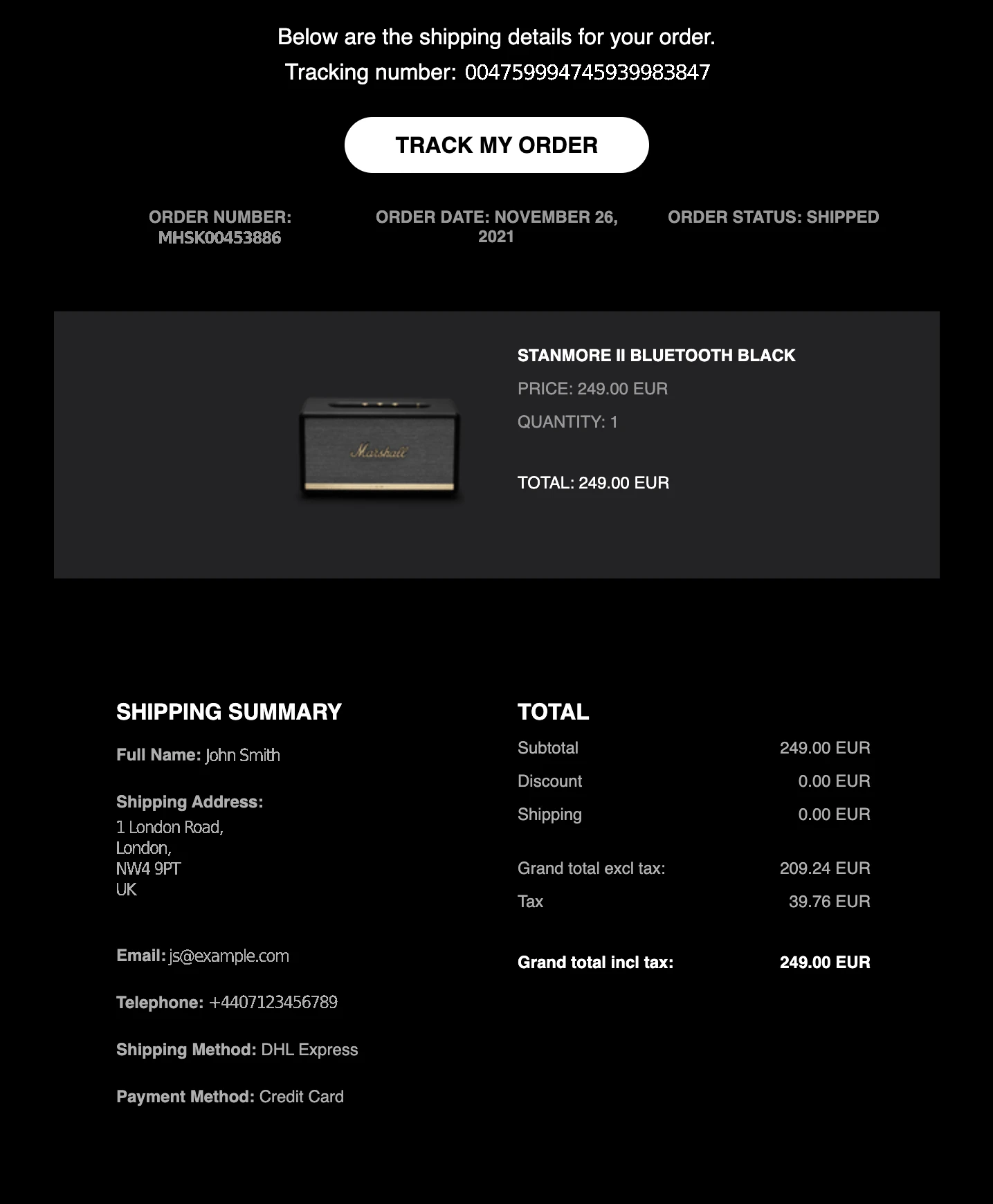
4. The closing
It’s always nice to sign off, even in transactional emails! The closing of your email will be at the bottom of the email and extends to the footer. You can include any other relevant information, next steps, links to important resources, and contact details—the key is to think about what the customer might do next. The core information to consider including is:
Links to related FAQs
Useful links such as shipping and delivery information, returns, and terms of purchase
Customer support contact details
Next steps and what to expect
Social media links
Here’s the rest of the Marshall shipping notification email. It includes all the information a customer needs to feel confident about their purchase, look up any necessary information, or get in touch.
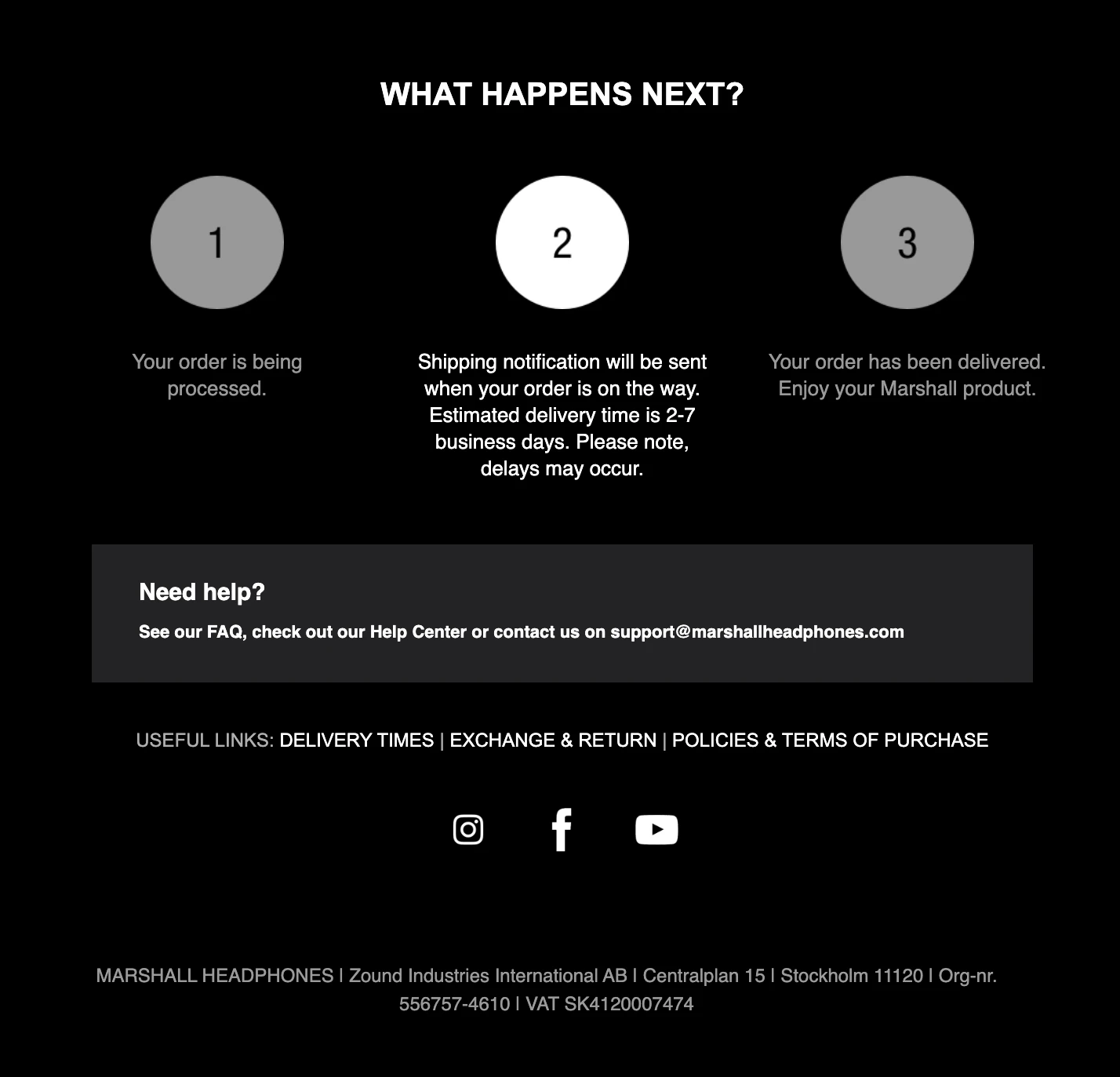
To make your shipping confirmation emails feel more friendly and personal, you can also include a special thanks for making a purchase, or extra information about the product that might be useful.
Take a look at this closing from Revolut’s shipping email. They sign off with thanks, but not before providing extra information about what the customer should do when they receive their card. They also include a CTA button to link their card to Apple Pay or Google Pay.
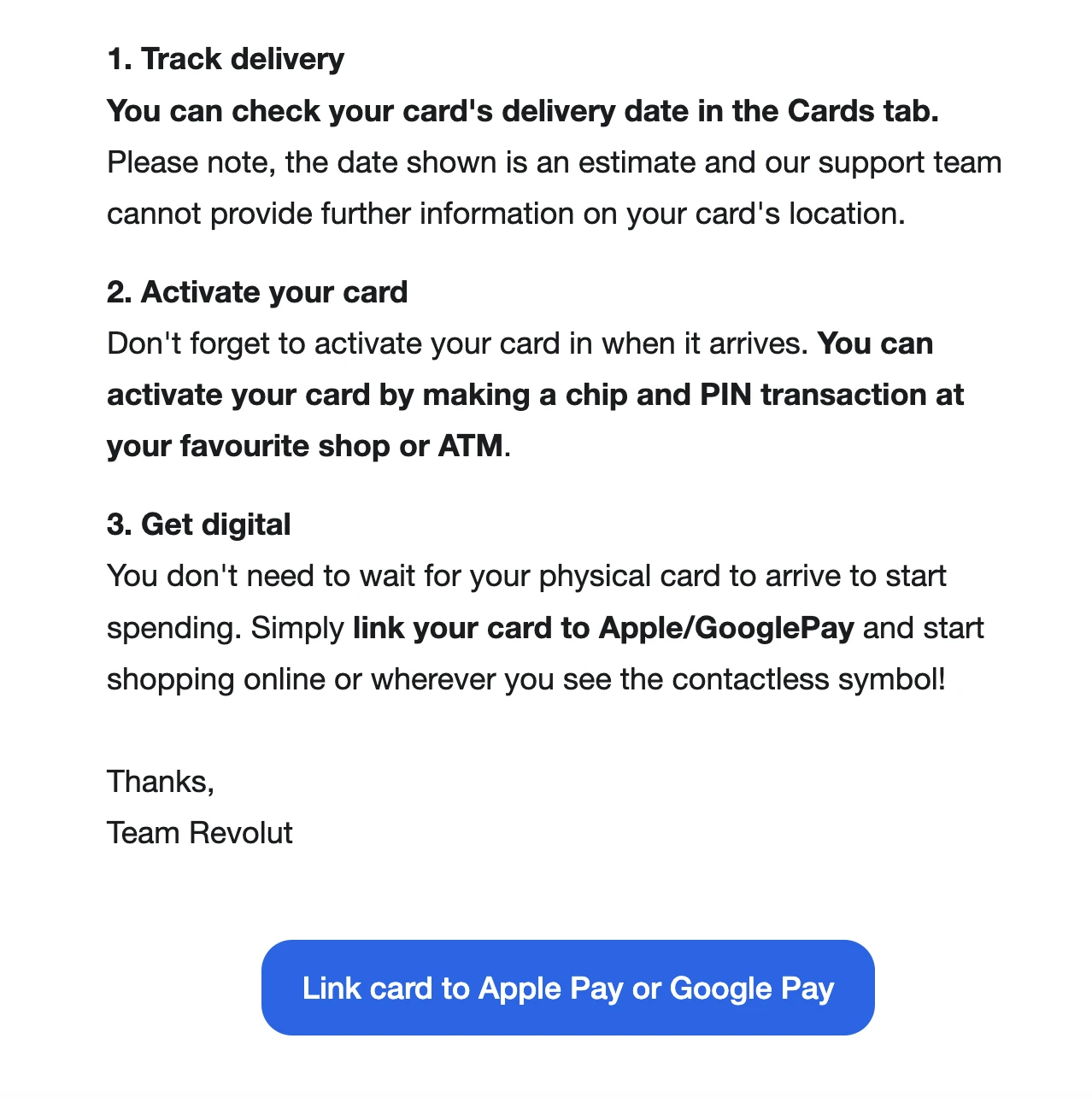
Finally, you can use the shipping confirmation as an opportunity to promote any current offers or cross-sell products for future purchases. Just don’t overdo it!
Cult Beauty makes product recommendations based on the customer’s order history, and also promotes a special offer. Aside from the promotional content, they also include tons of useful links and information, such as a CTA to contact the customer service team, social links, FAQs and other useful resources.
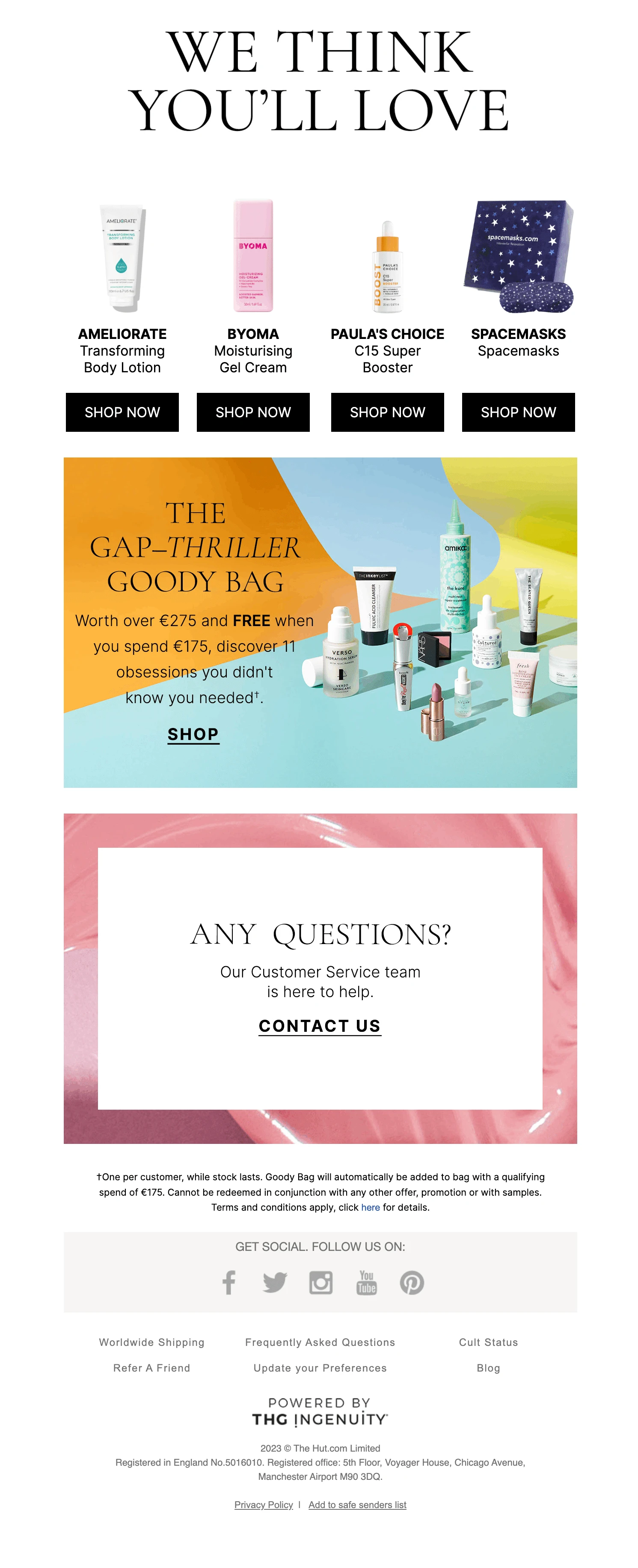
How to create spectacular shipping emails
Now we’ve outlined the components of a good shipping confirmation email, let’s take a look at how to craft the content that graces them.
1. Keep it to the point
Most shipping emails follow the same, concise format—and that’s because it works. You most definitely can include additional information if it’s relevant to the shipping process or the customer’s order. But flinging in random content will look messy and make it difficult for the recipient to decipher the important parts. Keep it short, sweet, and to the point without losing your brand identity.
2. Make use of clear, simple language
While shipping confirmation emails are important, they are also the kinds of emails that customers quickly scan to find the info they need. So make it easy for them! Avoid the use of complex words and sentences, and think about the terms that are commonly used in shipping emails and will be easily recognizable.
3. Be consistent with your branding
Shipping emails help to build trust—and keeping your branding in line with all of your customer communication plays a big part in that. The overall design of your transactional email templates should be the same, with the same colors, fonts, logos, headers and footers. Although shipping confirmation emails tend to lean on the more formal side, you can also extend your brand voice and personality to them as well. It’s all a part of shaping the brand experience and customer journey.
4. Use personalization
All good shipping emails use personalization by including the customer’s order details and shipping information. You can also take this up a notch by addressing customers by name and even offering suggestions based on their past behavior and purchases. Not only does the use of names stand out in the inbox, but personalizing your emails also helps to build better relationships with customers by customizing the content just for them.
5. Add value where relevant
Just like Revolut does in their closing, you can add value to your shipping confirmations by including additional resources, information or actions that will complement an order. Guiding the customer on how to use their new purchase or providing information about additional steps they can take to get the most from it will enhance the experience and undoubtedly increase customer satisfaction.
This can even cross over into promotional content, as long as it really is relevant to the customer’s purchase. For example, if a customer has purchased a mobile phone, you could suggest a protective screen cover. The additional sale would be great for you and would also be valuable to the customer, as they’ll be protecting their new purchase from damage.
6. Make your emails responsive
This doesn’t just apply to shipping confirmation emails, but all email marketing and transactional emails that you send. According to Adobe, 85% of users use smartphones to access emails. It kind of goes without saying that your emails need to be responsive for mobile devices.
In this case, when a shipping email is responsive, it’s much easier for recipients to read it on the mobile device and access the important details and order tracking information on the go.
Start with the email building blocks
Shipping confirmation emails are key to increasing customer satisfaction and fostering brand loyalty. The most important part is making sure your customers get the important details they need about their order. Once you have that down, you can work on increasing the value of the email by including elements that will enhance the customer experience and build brand loyalty.
If you stick to the essential elements of shipping emails, think about what the customer needs and wants in this part of the customer journey, and add value where it’s relevant you’ll be good to go!
Do you have any tips for creating great shipping confirmation emails? Share them in the comments!


